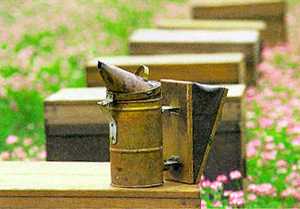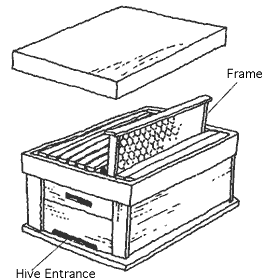
|
 The
Hive The
Hive
The hive is the where the bees live, and is an extremely important
piece of equipment for raising bees. We use a wooden box with
a lid which holds 8-10 frames. The opening on the bottom of the
box is the hive entrance. Two types of boxes are used: simple
boxes and stacked boxes. If there are not so many bees, a simple
box is used; if there are many bees a second story is stacked
on top. During the peak season, a third story may be used.
|
Note: This type of
box was developed in the mid-19th century by a man named
L. L. Langstroth. The dimensions of the box and length of
the frames are all standardized, which allows the beekeeper
to easily manage the bees by combining separate colonies
or moving frames. The Langstroth hive is the most common
type of hive used around the world today. |
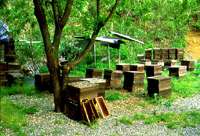 |
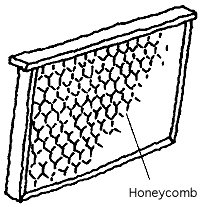
|
 The
Frame The
Frame
The honeybees build their honeycombs on the frame, which is a piece
of equipment as important as the hive enclosure. Three wires are
strung across a rectangular wooden frame. The bees secrete wax to
build their combs on the frame. To ensure that the worker bees build
straight, high-quality combs, we attach manufactured comb foundations
made of beeswax.
|
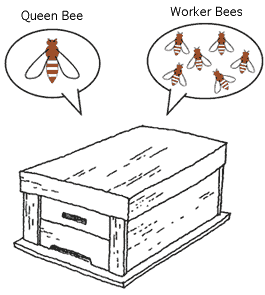
|
 A
Nucleus Colony A
Nucleus Colony
To start keeping bees, first you need honeybees. You can purchase
a nucleus colony, also known as a "nuc," which is a small hive unit
that contains several thousand worker bees and a laying queen. The
best time to buy a nuc is in the spring, from March to April, when
the young bees are increasing in number. As their numbers increase,
add frames and stack additional boxes to accommodate them.
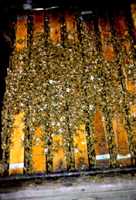 |
|

